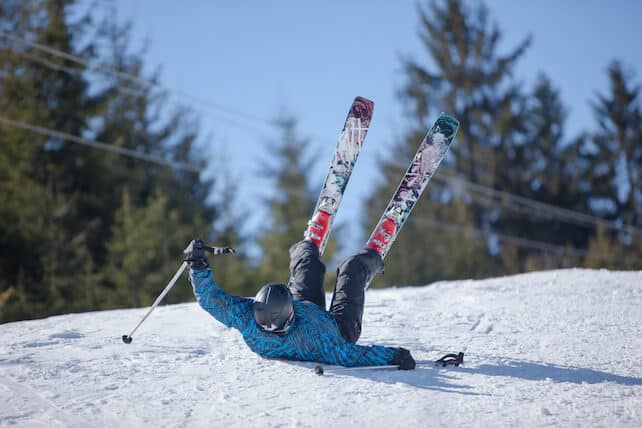
Over the past 30 years Michael Pettifer, MD of ski insurance specialists MPI Brokers, has encountered more than his fair share of ruptured ACLs and broken limbs. So what’s his advice on the optimal way to protect yourself when skiing?
I’ve been skiing all my life – indeed, skiing is my life and I built my career around it. We all know that while skiing is nowhere near as dangerous as a contact sport like rugby, the risks are still there. But each season I see injuries that could easily have been avoided by taking a few precautions.
So what can you do to give yourself the best chance of avoiding injury? Here are a few simple measures you should consider…
Get Fit Before You Go
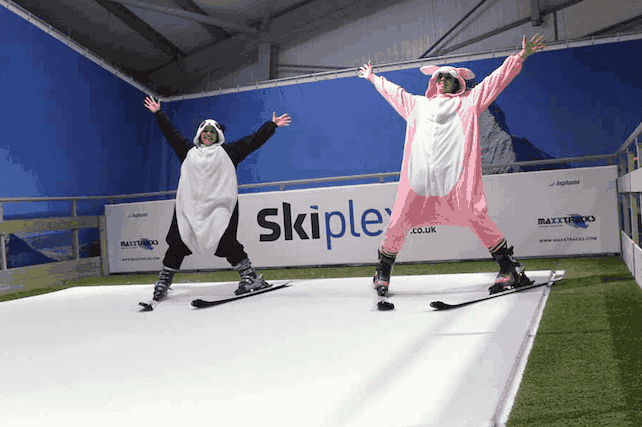
If you sit behind a desk for 11 months of the year and your only regular workout is a stroll to the shops or a walk in the park, you can’t really expect your body to cope with six days of strenuous dawn-to-dusk exercise (not to mention apres-ski glass lifting) without some screams of protest. If you’re a beginner it’s essential to take a course of lessons on an artificial slope, at an indoor snowdome or an indoor moving carpet like Chel-Ski.
Even experienced skiers should take fitness seriously: because accidents often occur at the end of the day when muscles are tired and minds fuzzy. Best would be to visit the gym or cycle regularly, follow a ski fitness programme, or go on some stiff hilly walks. Preferably all three.
An easier – albeit more expensive – way is to buy a Compex Muscle Stimulator and strengthen your legs whilst reading a book or watching TV! It’s no replacement for cardio-vascular exercise, but it’s great pre-Alpine training for those ski muscles that haven’t had an outing since last spring in Meribel or Mayrhofen.
Protect Your Head
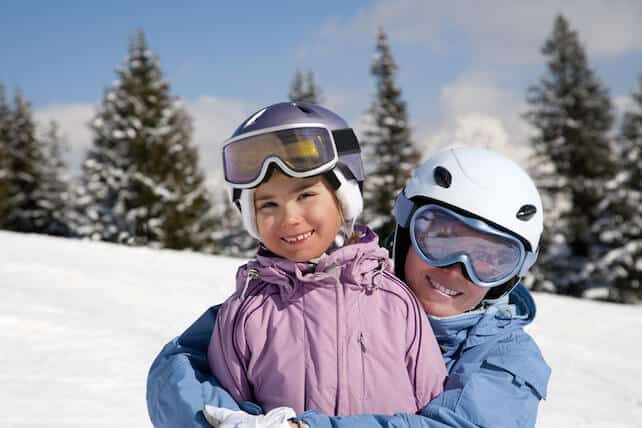
The American Association of Neurological Surgeons (AANS) places wintersports in the top 20 sports/recreational activities contributing to head injuries treated in hospital emergency rooms. It’s in the top 10 sports-related head-injury categories among children aged 14 and younger.
According to a John Hopkins Medicine-led study, severe head trauma accounts for around 20% of all ski- and snowboard-related injuries, and of those head injuries 22% are severe enough to cause loss of consciousness or concussion.
Head injuries are the most frequent cause of death and severe disability among skiers and snowboarders. Many insurance companies today make it a condition that you must wear a helmet whilst skiing or snowboarding, so it’s something you should check when purchasing a policy.
Be Methodical in the Park
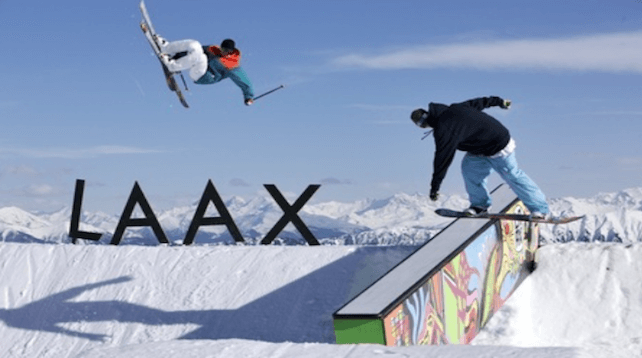
Parks are a common feature of ski resorts, with jumps, half-pipes, kickers and rails daring skiers and boarders to try ever-riskier jumps and tricks. Jumping is not the problem; it’s coming back down to earth that causes trouble, and terrain parks can be the setting for some unpleasant accidents as a result.
In fact, according research described in Ski-injuries.com, skiers and snowboarders tend to sustain more serious injuries in terrain parks than elsewhere else on the mountain. Rates of joint dislocation are also higher, as are rates of injury to the head, spine and chest.
If you’re planning to hit the park, check your ski insurance covers you first. Then be methodical and gradual in your approach. Make sure you know how to take off and land. Always inspect a jump before you try it. Work your way up from small jumps and easy terrain features gradually, staying within the limits of your freestyle ability. And never ever follow close behind someone who’s jumping: they may crash just in front of you.
Many American ski resorts, such as Breckenridge, publish very sensible freestyle codes of conduct. Print one of them off and take it with you before you go.
Also essential for terrain-park safety is protective equipment – including helmets, back protectors and padded shorts. Snowboarders should also use wrist guards.
Brace Yourself After Injury
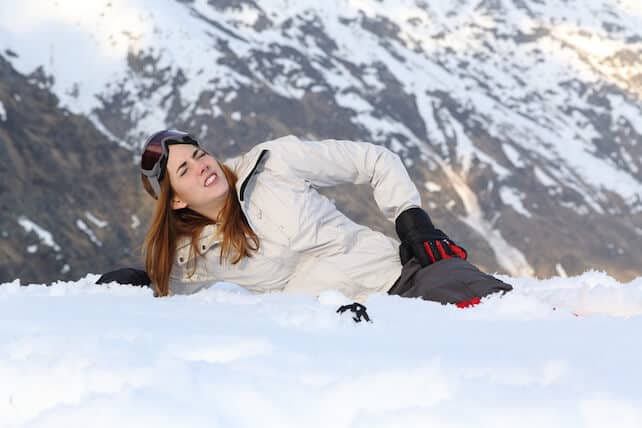
For those who have suffered from knee injuries in the past, a good knee brace, specifically made for sports, will perform in a similar way as a helmet does for the head. It can’t prevent every injury, but it can certainly help protect from further injury and also provide support for unstable knees.
The Donjoy Armor with Fourcepoint Knee Brace has been especially created for skiers and snowboarders who’ve suffered from a previous ACL injury. Constructed from light aircraft-grade aluminium, the brace gives its users the confidence of knowing that they are wearing some of the strongest off-the-shelf protection around.
The hinged brace is spring-loaded to keep the hamstring in constant tension. As the hamstring is attached to the tibia this tension pulls the tibia back, keeping it stable and reducing the chance of a further ACL injury.
For skiing after an injury, see our feature on Getting Back to Skiing.
Hire a Guide When You Ski Off-Piste
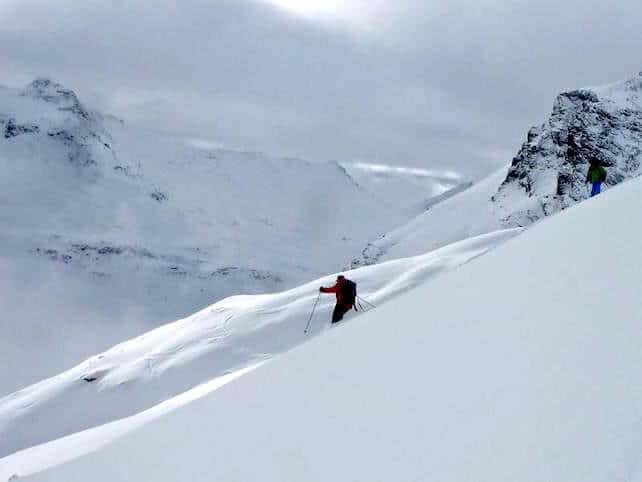
Learning to ski or snowboard off-piste with a mountain guide or suitably qualified instructor is a real investment – and pays big dividends. You’ll learn how to adjust your technique to variable snow conditions, how to ‘read’ the mountain, and what to do if something goes wrong. You’ll also be taken to the best and safest slopes according to snow conditions on that day.
It’s no guarantee your off-piste skiing will be accident-free, but for untrained off-pisters it greatly increases the chances of staying safe. Going to one of Henry’s Avalanche Talks or a similar course is a great idea too: at the very least it will equip you with a healthy respect for the mountains in winter.
Just be sure to check your insurance covers you for off-piste skiing before you go – and if there are any limitations to the cover.
Always Carry Avalanche Safety Gear
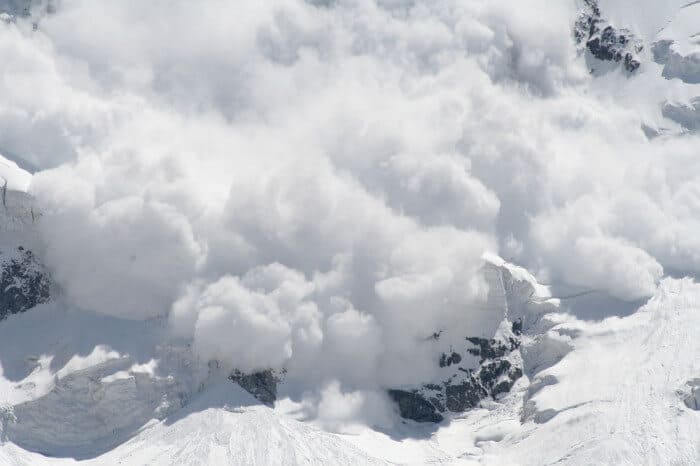
Never go off-piste without full safety gear – including a transceiver, probe and shovel. Venturing off-piste without them is, frankly, madness.
You’ll need to check they’re in working order every time you use them, too – in particular, that the transceivers are working properly and are switched on before everyone starts skiing. Just as important is being well-versed in their use. The shocked and panicky aftermath of a real avalanche is no time to learn how to carry out a grid search.
If you regularly ski in the deep, invest in an ABS backpack like Haglöfs Vojd – which, when caught in an avalanche, inflates using a gas canister (filled with Argon) to help keep you floating on the surface of the snow. Carrying the canister on scheduled flights involves tedious phone calls and form filling.
The latest product on the market is Black Diamond’s Halo 28 Jetforce, which uses revolutionary technology developed in conjunction with Pieps. The gas canister is replaced by a battery-powered fan that inflates the bag in less than four seconds.
Don’t Slip Up
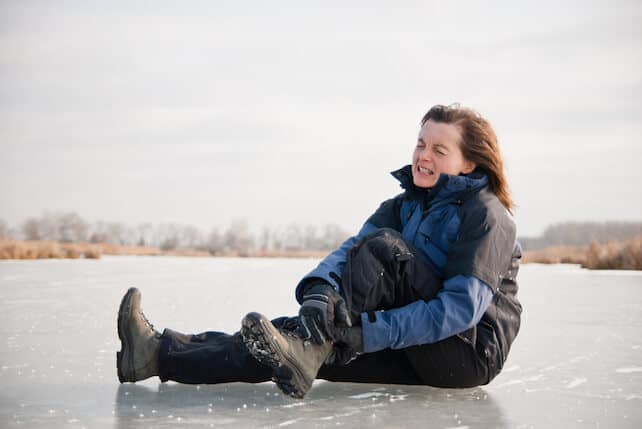
Slipping on the ice while walking in a ski resort is the cause of many an injury. In icy conditions high heels obviously are a no-no – but trainers and even snow boots are not completely accident-proof. You can help to avoid a broken ankle, jarred back and even head injury and it doesn’t cost a fortune to buy a set of boot crampons.
Yes, they will be visible, but not really that noticeable when clipped onto to the chunkier type of snow boot – and you’ll feel a lot more confident walking. Try Ice Gripper, Shoe Chain, or one of the many different brands you can find on Amazon or eBay.
What Do You Think?
Follow the advice above, and you’ll be giving yourself a much better chance of avoiding a week-ending injury than those that ignore it.
Why not bookmark this page so you can refer back to it before you next head to the mountains? And if you think it’s missing something, please add your suggestions in the comments box below. If they’re good, we’ll include them in the list with full credit given to you. Be safe out there this winter!
You can also read Michael’s feature on The Ski Season Survival Secrets.










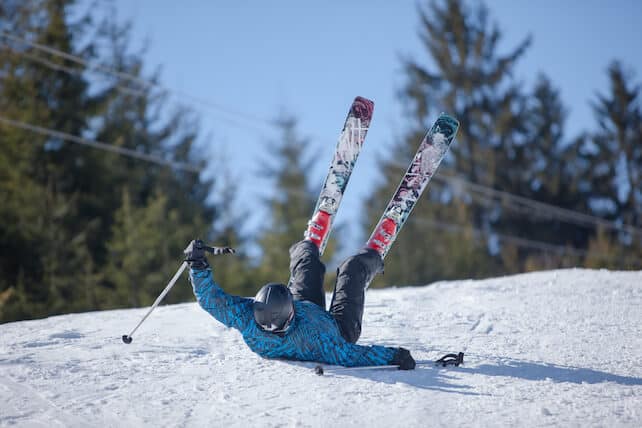
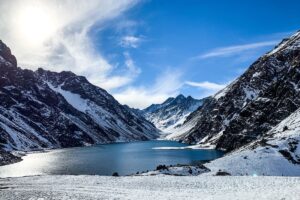

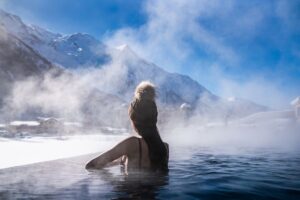
Nice list, the one I always quote is avoid hooking your thumb around your pole – keep your thumb next to your first finger so if you use your fists to break a fall on an icy slope your poles don’t slam your thumb back and damage a ligament. A minor injury but easy to avoid.
Hi Michael, all very interesting. Thanks.
On the helmet question, no traditional, stuck-in-the-mud Colonel Blimp type will deny that helmets give protection in the event of a blow to the head. If you were about to hit me over the skull with a cricket bat, I’d be glad to be wearing a helmet. So why are injuries increasing, and head injuries not decreasing, now that 90% of the people on the hill are wearing a hard hat?
It seems to me that everyone is skiing faster and dafter than before. When I wear a helmet I lose the wind rushing over the side of my face and through my bobble hat, and I’m not quite so aware of my speed. And I feel safer. So I think I’m Superman, and can take a few more risks…
I definitely lose some of my hearing, and in particular my directional hearing. I’m less aware of the person about to take me out from the side or behind.
More importantly, my goggles block out 30º or so of peripheral vision on either side. I’m going to invest in wraparound goggles, but unfortunately until they become more widely worn, most of the people about to collide with me simply won’t have seen me.
I have survived forty seasons in Val d’Isère, and I’m getting old and slow and cautious, so I’m horribly aware of all the human cannonballs straightlining the blue runs. I ski looking up the fall-line, not down it, and when the slopes are busy I hold my poles the wrong way around, like swords, so that when potential manslaughterers finally notice me, they realise I’m a nutter, and give me a wide berth!
Many of them think their head is a tripod, and reckon they’re making the next Hollywood blockbuster with their GoPros as they scatter children and trees across the mountain; some are listening to their personal discos, and their last thought will be ‘Wow, I never heard Coldplay say ‘Watch out!’ on that track before; some are riding sideways like the Queen on her horse, and neither know nor care if I’m in their blind spot; some are trying to break the land speed record on some suicidal app on their me-phones.
Everyone is bandying dodgy science and statistics in the helmet debate. Here’s some more: of the first thousand injuries I’ve had to help with, not one was to the head. One gentleman smashed his face up by schussing into the blade of a Ratrak, but a helmet would not have helped him! It seems to me that the best way not to injure yourself on the head or anywhere else is by avoiding wipe-outs and particularly collisions. And that should mean no GoPros, no earphones, extra care around boarders and helmet-and-goggle-wearers, going easy on boozy lunches, speed cannons on green runs and prison sentences for people who injure other people.
I told you I was getting old…
John, very eloquent. You are in a club of three highly experienced skiers who are friends of mine who don’t wear helmets for recreational skiing – Konrad Bartelski and James Blunt are the other two. Both were racers who say that, while they understand and accept any risks to themselves as a consequence of their no-helmet decision, it is simply a matter of personal choice. I wonder, John, were you a racer in your youth…or even perhaps a singer?
A singer. I wore a helmet to stop the bottles. It was more use than the helmets modern skiers wear…
Brilliant comments. Personally I like wearing a furry hat with goggles and I hope that a blanket “you must wear a helmet” policy is NOT introduced. I feel that the more safe people are equipment wise the more stupid the risks they take to experience excitement. All accidents are different and there is no guarantee that a helmet will save you – But I would say that wearing a helmet is a good idea, especially if you are younger. Being 46 I wonder how much longer I will be able to snowboard, as I really enjoy riding down the mountains in the Alps in all conditions. Its a lot more exciting than the flatlands of Essex.
Wearing a helmet is safer than not wearing a helmet. The evidence you describe of helmets and goggles blocking sound and sight, people with gopros skiing recklessly etc is all anecdotal. The snowboarding thing is just stereotyping. If you remove all other factors, skier X is safer with a helmet than without one. I fully support your right not to wear a helmet. But saying your safer without one is really just silly.